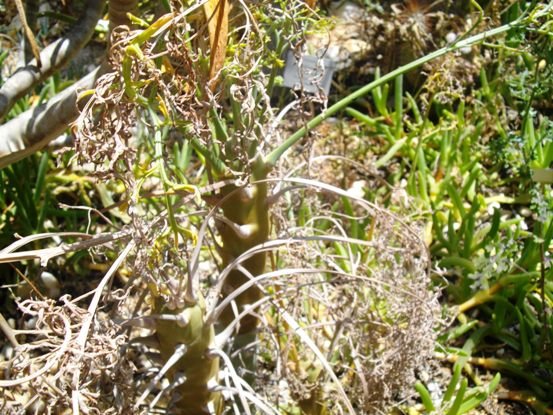Pelargonium paniculatum

Author: Ivan Lätti
Photographer: Ivan Lätti
Pelargonium paniculatum, sometimes called the baobab storksbill, is one of the thick-stemmed or caudiciform members of the Pelargonium genus. The stem reaches 12 cm in diameter and 70 cm in height. The leaves are finely and sparsely pinnate, channelled on the linear segments. They grow in winter.
The white to cream flowers grow in branched panicles of few-flowered umbel-shaped clusters. The flowers have narrow, curved or partly reflexed petals with pinkish to brown markings along the veins and rounded tips. The upper two petals have more of the coloured markings near their bases. Flowering starts in winter, the rainy season, continuing until after midspring. The brown fruits are narrow, attached to spiralling tails that contribute to wind dispersal of the seeds.
The plant grows in the Northern Cape, the restricted distribution is coastal Namaqualand from Hondeklipbaai to the Richtersveld near the Gariep River; also in southwestern Namibia near the River.
The habitat is arid, montane desert. The storage of moisture in the bulky succulent stem suggests such a habitat: arid places where rain is scarce and surplus moisture conservation capacity is a survival asset. The habitat population is deemed of least concern early in the twenty first century (iNaturalist; www.aridlands.com; www.bihrmann.com; www.geraniaceae.com; http://redlist.sanbi.org).

